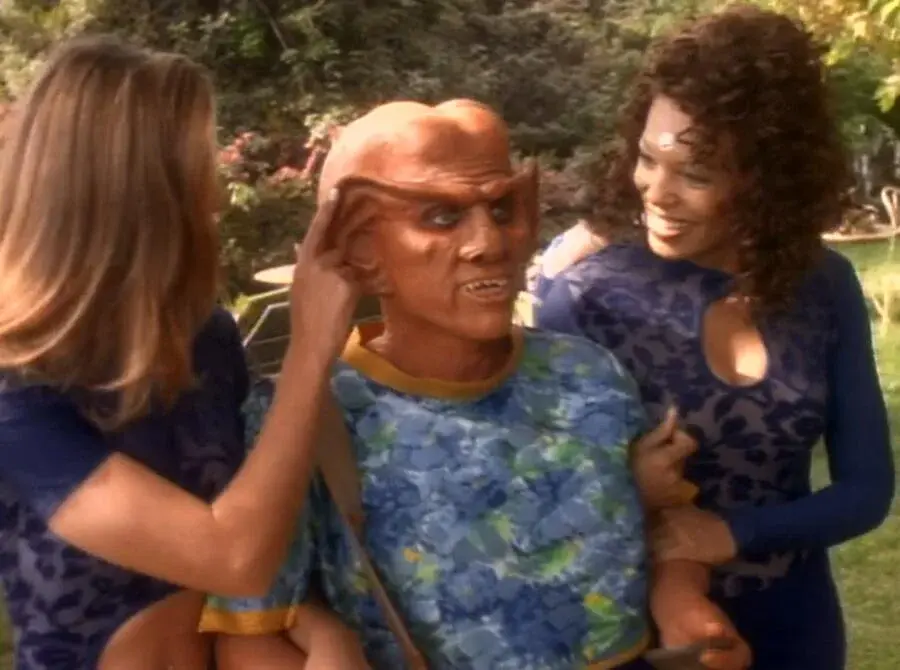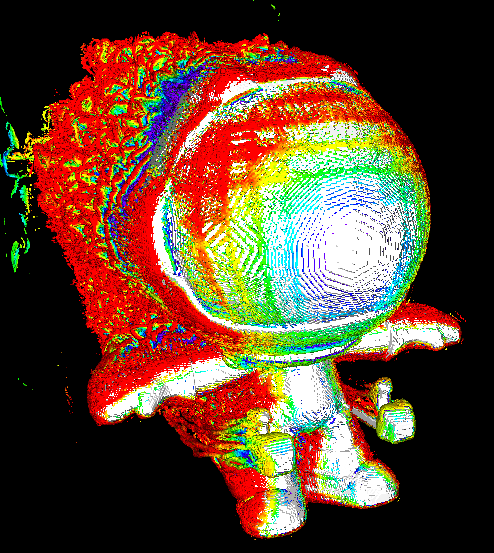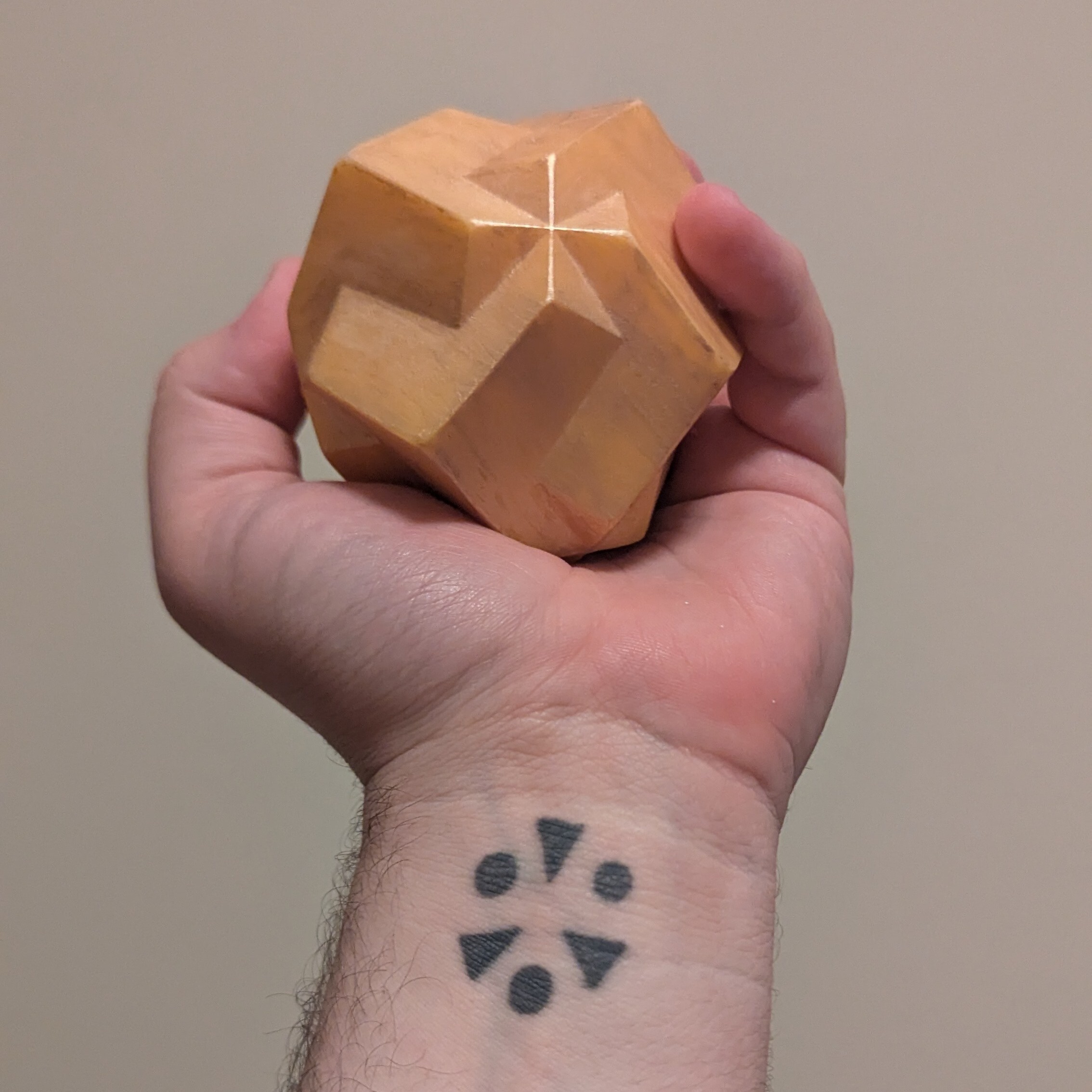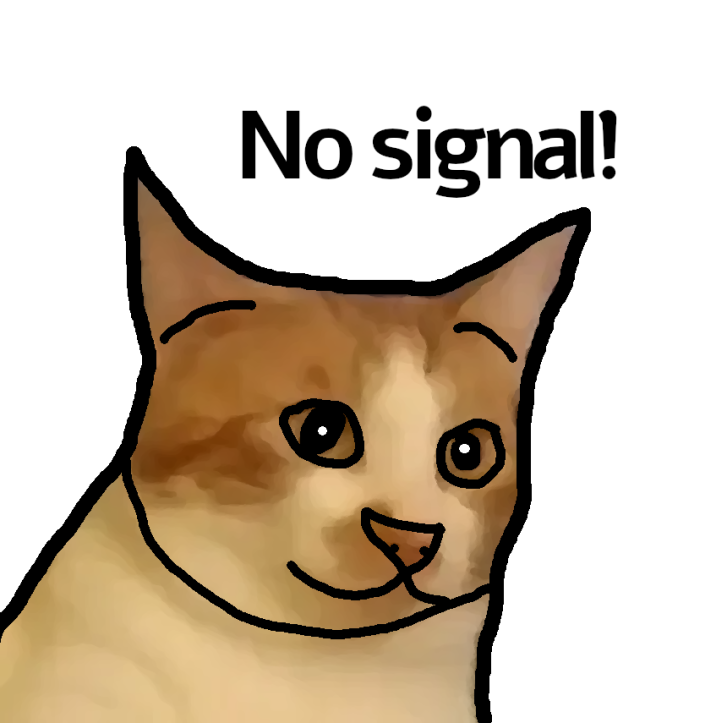When I had a PS5 and Cyberpunk, I would sometimes switch ray tracing on and off to see if it made a huge difference. Well, the frame rate would be capped at 30 with it on…and I suppose if I stopped and looked around for a bit, it was noticeable, but honestly, I preferred the higher framerate. I’ve yet to see a game that really benefits from RT.
It’s mostly developers that benefit from RT long-term. Not now while it’s optional, but once it becomes a requirement, they can cut a couple of time-intensive steps from the development pipeline.
Can’t wait until my GPU needs 1000W to run :'(
We’ve gotten so good at faking most lighting effects that honestly RTX isn’t a huge win except in certain types of scenes.
The difference is pretty big when there are lots of reflective surfaces, and especially when light sources move (prebaked shadows rarely do, and even when, it’s hardly realistic).
A big thing is that developers use less effort and the end result looks better. That’s progress. You could argue it’s kind of like when web developers finally were able to stop supporting IE9 - it wasn’t big for end users, but holy hell did the job get more enjoyable, faster and also cheaper.
Cyberpunk and Control are both great examples - both games are full of reflective surfaces and it shows. Getting a glimpse of my own reflection in a dark office is awesome, as is tracking enemy positions from cover using such reflections.
I have only ever seen Cyberpunk in 2k res, ultra graphics, ultra widescreen, ray-tracing and good fps at a friend’s house and it does indeed look nice. But in my opinion there are too many reflective surfaces. It’s like they are overdoing the reflectiveness on every object just because they can. They could have done a better job at making it look realistic.
For any other game, I’d agree, but cyberpunk being full of chrome is an aesthetic that predates the video games by a fair margin, haha.
My problem is more with wet surfaces and the likes. Walking around the city it feels like every little water puddle is mirror and a spoon can also reflect way too much. I don’t mind shining chrome body parts.
Oh, they are definitely intentionally overdoing it since 90% of said reflective surfaces are ads, often reflecting other ads in there. The game is such an assault of advertising that I’ve found myself minding the advertisements in RL public spaces a lot
moreless.
But, it takes a lot of work by designers to get the fake lighting to look natural. Raytracing would help avoid that toil if the game is forced RT.
Gamers needs expensive hardware so designer has less work. Game still not cheaper.
I took pickes and tomatoes off my burger, where’s my $0.23 discount damn it?!
Let’s assume cutting out tomatoes and pickles saved $0.23 per hamburger.
McDonald’s serves 6.5 million hamburgers a day.
That’s $500 million extra yearly profit for their shareholders.There’s actually a decent analogy there I think. The hamburger won’t cost less, because the service of customization it itself less efficient: serving customers with their preference of with/without is more expensive than just pickles for all. Likewise I imagine making a game that looks OK with/out RT is extra work than just with.
There is no analogy. It’s comparing returning costs per product (you need a new tomato per 5 burgers) to a one time costs that can be cut during development. And additional copies of a game don’t generate more costs.
There really isn’t.
The op comment was that gamers need to buy expensive hardware so that developers could cut on features/optimization.
The follow-up reply likened it to customizing your burger, but the better analogy (and the one I assumed) would be for McDonald’s to remove all tomato and pickles (saving money), and the user had to buy it themselves to add to the burger.
thats the same logic behind the really high hardware requirements nowadays.
studios just wanting to save time and cut corners, and you have to offset that with really expensive cards.
The issues come if you know how they’re faking them. Sure, SSR can look good sometimes, but if you know what it is it becomes really obvious. Meanwhile raytraced reflections can look great always, with the cost of performance usually. It’s sometimes worth it, especially when done intelligently.
Not true. Screen space reflections consistently fails to produce accurate reflections.
Screenspace isn’t the only way to draw reflections without RT. It’s simply the fastest one.
Most gamers aren’t going to notice, and I can count on one hand the number of games that actually used reflections for anything gameplay related.
What I’m talking about is drawing accurate reflections and I don’t know any other technique that produces the same accuracy as RT
That’s like saying that “physics simulation is the only technique that produces accurately shaped water streams” - technically true but generally not a sufficient improvement over the shortcuts currently in use to make up for the downside that the technically most precise method is slow as fuck.
Game making is at all levels finding shortcuts and simplifications (even games about the real world are riddled with simplifications, if only the gameplay rules being a simplified version of real world interactions because otherwise it would be boring as shit) and in the visual side of things those are all over the place even with RT (the damage on the walls, the clouds in the sky, the smoke rising from fires or the running water on the streams aren’t the product of Physics Simulations but, most likely, the use of something like Perkin Noise or even good old particle effects to fake it well enough to deceive human perception).
Yeah, sure RT is, technically speaking in terms of vidual fidelity alone, better than the usual tricks (say, using an extra rendering step for the viewpoint of the main reflective surfaces such as mirrors). Is the higher fidelity (in, remember, a game space which is in many other ways riddled with shortcuts and simplifications) sufficient to overcome its downsides for most people? So far the market seems to be saying that it’s not.
CDProjektRed just showcased The Witcher 4 running RT with 60 fps on a PS5. Bullshit its too slow to be available for most people.
From an article about it:
Now, it should be stressed that this is a build of The Witcher 4 specifically designed to show off Unreal Engine’s features. Yes, it’s running on a standard PS5, but it’s not necessarily indicative of the finished product.
So that’s like saying “under laboratory conditions it has been demonstrated to work”.
If you know what to look for you can notice it (mainly light bouncing of objects and tainting shadows with the color of those objects, such as the shadow above the green canvas here), but the difference to the non-RT version when one doesn’t know what to look for is minimal and IMHO not enough to justifying upgrading one’s hardware, especially considering that so much of the rest (the water in the streams, the snow in the mountains, the shape of the mountains themselves, the mud splash when a guy is thrown into the mud, the folliage of the plants and so on) has those visual shortcuts I mentioned.
Yeah, sure, it’s nice than shadows next to strongly lit colored surfaces get tinted with the color of that surface, but is that by itself worth it upgrading one’s hardware?!
When most games with RT in them deliver that performance on one generation old hardware and all environments, then you will have proven the point that for most gamers it has no significant negative impact on performance.
RT was three generations ago, and I don’t think they really vary the number of rays much per environment (and rt itself is an o(log(n)) problem)
If you think that video is representative of the release game’s actual performance and fidelity, I have several bridges to sell you.
I don’t see them lying but that’s on you I guess
Depends on how you define “accurate”. Even full ray tracing is just an approximation based on relatively few light rays (on an order of magnitude that doesn’t even begin to approach reality) that is deemed to be close enough where increasing the simulation complexity doesn’t meaningfully improve visual fidelity, interpolated and passed through a denoising algorithm. You can do close enough with a clever application of light probes, screenspace effects, or using a second camera to render the scene onto a surface (at an appropriate resolution).
That’s true, but after a few frames RT (especially with nvidia’s ray reconstruction) will usually converge to ‘visually indistinguishable from reference’ while light probes and such will really never converge. I think that’s a pretty significant difference.
Reflection probes are one way. Basically a camera drawing a simpler version of the scene from a point into a cubemap. Decent for oddly shaped objects, although if you want a lot of them then you’d bake them and lose any real time changes. A common optimisation is to update them less than once a frame.
If you have one big flat plane like the sea, you can draw the world from underneath and just use that. GTA V does that (like ten years ago without RT), along with the mirrors inside. You could make that look better by rendering them in higher resolution.
https://www.adriancourreges.com/blog/2015/11/02/gta-v-graphics-study-part-2/
Where RT is visibly better is with large odd shaped objects, or enormous amounts of them. I can’t say it’s worth the framerate hit if it takes you below 60fps though.
I haven’t personally played a game that uses more than one dynamic reflection probe at a time. They are pretty expensive, especially if you want them to look high resolution and want the shading in them to look accurate.
There are cases where screen space can resolve a scene perfectly. Rare cases. That also happen to break down if the user can interact with the scene in any way.
Ray tracing isn’t supposed to make things look better, it’s supposed to save development time
If you spend enough time on lighting you can make static lights look better but that’s just it, it takes longer so it costs more
Baked lighting looks almost as good as ray tracing because, for games that use baked lighting, devs intentionally avoid scenes where it would look bad.
Half the stuff in this trailer (the dynamically lit animated hands, the beautiful lighting on the moving enemies) would be impossible without ray tracing. Or at the least it would look way way worse:
Practically impossible for this developer? Maybe. Technically impossible? No.
We do have realtime GI solutions which don’t require raytracing (voxel cone tracing, sdfgi, screenspace, etc). None of which require any ‘special’ hardware.
Raytracing is just simpler and doesn’t need as much manual work to handle cases where traditional rasterisation might fail (eg; light leaking). But there’s not many things it can do which we can’t already achieve with rasterisation tricks.
Raytracing is mostly useful for developers who don’t have the time/budget/skillset to get the same visual quality with traditional rasterisation.However, in an industry which seems to prioritise getting things released as cheaply and quickly as possible, we’re starting to see developers rely heavily on raytracing, and not allocating many resources into making their non-rt pipeline look nice.
Some are even starting to release games which require raytracing to work at all, because they completely cut the non-rt pipeline out of their budget.So I’d argue that you’re incorrect in theory, but very correct in practise (and getting even more correct with time).
That’s kinda the thing with ray tracing. You can save a lot of work but since you want your game available for gamers that don’t have the hardware you still have to do that work…
I’m expecting the next PlayStation to focus on ray tracing to set it apart in the market. They have the volume and it would be good for their exclusive titles.
Edit: Okey, maybe I’m just hoping, rather than expecting. Sony can absolutely screw this up.
Soooo, there’s a missing part here. The point (and drive) behind raytracing isn’t making games beautiful, it’s making them cheaper and less man-hour intensive to make/maintain.
The engine guys spend manyears every year working on that non-raytraced engine so it can do 150. They’ve done every cheat, every side step, and spent every minute possible making it look like they haven’t done anything at all.
The idea is that they stop making/updating/supporting non-raytracing engines and let the GPU’s pick up the slack. Then using AI to artificially ‘upgrade’ the frame rate with interpolation.
Don’t forget that temporal smear. I like to apply vaseline directly onto my monitor instead.
Don’t forget the 10 shadow copies of my car/weapon following me around. It’s like someone really liked having a trailing mouse cursor and thought everything should have it
It’s not just a time limitation either tho, it also opens up a lot of room for artistic direction and game design
I don’t think you could possibly make something like Control’s shiny black blocks world look decent without raytraced reflections.
Also anything with significantly large dynamic geometry usually either needs like half of the level file size to be duplicated for every possible state, or some form of raytracing, to work at all. (There’s also things like voxel cone tracing that do their own optimized tracing but they also don’t really work in 100% of situations and come with their own visual downsides)
To see how far rasterization has been stretched, and how that holds back development - Path of Exile 2 has a tech talk about their bare minimum settings. Artists weren’t allowed to rely on anything that could be turned off. They begged the programmers for specific gimmicks, and turned that cheap nonsense into a million blades of grass, raymarched cracks in translucent ice, and soft shadows with no Peter Panning.
Or, picking one specific trick: ambient occlusion was half of why Crysis humbled $5,000 PCs. There’s a slide deck for how a superior version of the same effect was achieved in Toy Story 3 on the Wii.
Real-time raytracing was unobtanium for decades because we kept moving the goalposts. The entire 3D games industry is built on cheating around simple parallel techniques being too expensive. By the time hardware catches up to where doing something the simple way is feasible, complex software has faked a wild variety of other effects. Meanwhile: games are designed to rely on what’s available. All of the tells for proper path-traced lighting have either been faked or avoided. Games don’t even do mirrors, anymore.
There’s a reason RTX shows off games from the late 1900s.
It’s like when the unity game engine came out, somehow IMO, instead of having to program the whole thing up to your specific game, now everyone could make a 3D platformer.
It does, again IMO, take the soul out of games.
The earliest publicly available engines were id software engines. Whenever id developed a new one, they released the old one for free. That’s why we got a lot of doom clones and those doom clones became whole new genres of games. Thief, half-life, counterstrike, duke nukem, serious Sam, Wolfenstein, call of duty and many many many more games are direct descendants of developers playing with open source engines.
If your argument is that games are worse because developers don’t need to build their own engines anymore, you are dead wrong.
Lol you just explained it yourself.
We won’t go back in time to change things, and it was obvious what was going to happen, and it’s not always wrong either, but you can’t just brush away that everyone and their grandmother had to make a 3D platformer when unity came out.
Good or bad, it generally led people astray IMO.
There were lots of engines out there back in the day, the ID one was just the most polished (by far), you still had to know what you were doing, not so much with Unity.
Heh, I can appreciate that. That was also said when people stop using ASM and again when games started running in Windows. Not running games in dos felt really icky.
True, even if there weren’t that windows border, you just knew windows were lurking behind the game somewhere in the shadows…
I think it was 98 when I finally had a computer powerful enough to play quake and burn a cd at the same time. Dual processor, SCSI disk, quarter gig of ram.
I had like a 1GB hard drive … I was poor.
I think raytracing is fine for games that want a lot of realism. But I’m playing games with monsters and fantasy. My suspension of disbelief isn’t going to break because reflections aren’t quite right.
But I’m pretty much in the camp of, I want my games to look and feel like games. I like visual cues like highlighting items I can interact with or pick up. So lighting is always non-realistic.

What game is this?
Dark Souls 2
Call of Duty Modern Warfare 2
Pokémon Ruby/Saphire/Emerald
Yes, cool. But annoying after the first minute. And way too reflecting.
<.< How is that annoying?
Distracting, if the only thing moving else are NPC and mobs.
Look at Tiny Glade, it’s a great example of what raytracing can bring to a stylized game. (They did use their own raytracing pipeline different from the usual - in their own words, re-stir was overkill for what their game needed). Or like 95% of animated films. Including Arcane but excluding Stray.
Maximise your RTX performance with this one crazy hack!
Ray traced reflections: on
Ray traced everything else: offI’d argue reflections are nowhere near as nice looking as RTGI. If anything, switch reflections off.
But muh puddles! Night City is nothing without those gorgeous, mirror–like puddles.
Also caustics and volumetrics, if your game has those.
Raytracing is cool, personaly I feel like the state that consumers first got it in was atrocious, but it is cool. What I worry about is the ai upscale, fake frame bullshit. While it’s cool that the technology exists; like sweet, my GPU can render this game at a lower resolution, then upscale it back at a far better frame rate than without upscaling, ideally stretching out my GPU purchase. But I feel like games (in the AAA scene at least) are so unoptimized now, you NEED all of these upscaling, fake frame tricks. I’m not a Dev, I don’t know shit about making games, just my 2 cents.
Raytracing will be cool if hardware can catch it up. It’s pretty pointless if you have to play upscaled to turn the graphics up. And as you say, upscaling has its uses and is great tech, but when a game needs it to not look like dogshit (looking at you Stalker 2) it worries me a lot.
I feel like if you have the level of a 3070 or above at 1080p, pathtracing, even with the upscaling you need, can be an option. At least based on my experience with portal rtx.
Personally I have a 3060, but (in the one other game I actually have played on it with raytracing support) I still turned on raytraced shadows in Halo Infinite because I couldn’t really notice a difference in responsiveness. There definitely was one (I have a 144hz monitor) but I just couldn’t notice it.
No you’ve pretty much hit it on the head there. The higher ups want it shipped yesterday, if you can ship it without fixing those performance issues they’re likely going to make you do that.
The joke is, LCD smear anyway on low framerates.
Optimization is usually possible, but it is easier said than done. Often sacrifices have to be made, but maybe it is still a better value per frame time. Sometimes there’s more that can be done, sometimes it really is just that hard to light and render that scene.
It’s hard to make any sweeping statements, but I will say that none of that potential optimization is going to happen without actually hiring graphics devs. Which costs money. And you know what corporations like to do when anything they don’t consider important costs money. So that’s probably a factor a lot of the time.
I think RayTracing is pushed so hard by the industry because it gives manufacturers an excuse to force consumers to buy better cards to get “the very best”. I have a 4070 and I never use RT.
That’s why I will literally never support Nvidia. AMD isn’t perfect but at least they play nice with open source.
i wish they would just make more gpu so they aren’t so supply limited geez
Why would they want to do what’s bad for them and good for us? They’re a corporation:)
rt is a marketing trick very few games are made in a way that makes it look better
as someone who has worked in visual fx for 20 years now, including on over 15 films and 8 games, raytracing is most definitely not simply a marketing tool.
Raytracing is being pushed so hard by the industry because it makes things easier for devs as opposed to making the games look better for the customer.
There is absolutely nothing about raytracing which makes it “easier” for devs compared to a traditional render pipeline.
The extra performance rquirements alone mean you’re going to be doing more work elsewhere to make up for it, and that’s ignoring the current bugs/quirks with RT in whatever engine you’re using.
The extra performance rquirements alone mean you’re going to be doing more work elsewhere to make up for it, and that’s ignoring the current bugs/quirks with RT in whatever engine you’re using.
No worries, we got upscaling and frame generation now!
Yes, you can skip simulating GI with many small lights. Not a game dev, I work in animation. Up until fifteen years ago this was still a regularly taken approach to lighting scenes, before the advent of pathtracers
I thought the ultimate goal was to encapsulate the lighting system entirely inside the engine to stop programmers/artists needing to micro manage light sources. Presumably if a game only supported ray tracing then they could interact with an environment at the object level and trust the lighting would work in a life-like manner without having to be confected as part of development.
trust the lighting would work in a life-like manner
Ah we’ve had raytracing for a long time already, and you can download something like Blender and play around with it yourself. You’ll quickly discover that just because it conforms to some real-world principles (and works in a reliable manner) doesn’t mean it’s a magic tool that Just Works and immediately makes anything look good.
You still have to setup your world lighting (point/sun lights, skyboxes, emissive materials, whatever), adjust it to get the look you want, and your hardware requirement for testing this are now increased.
Raytracing is nice because it can make things look even better, not because it replaces parts of the workflow.
you still need to setup your world lighting
That was the locus of my misunderstanding. Thanks for explaining!
It’s not a trick, it’s just lighting done the way it should be done without all the tricks we need now like Subsurface scattering or Screen space reflections.
The added benefit is that materials reflect more of their natural reflection making all the materials look more true to life.
Its main drawback is that it’s GPU costly, but more and more AAA games are now moving toward RT as standard by being more clever in how it handles its calculations.
Yes, I’m sure every player spends the majority of their game time admiring the realistic material properties of Spider-Man’s suit. So far I’ve never seen a game that was made better by forcing RT into it. A little prettier if you really focus on the details where it works, but overall it’s a costly (in terms of power, computation, and price) gimmick.
The one benefit I see is that it simplifies lighting for the developer by a whole lot.
Which isn’t a benefit at all, because as of now, they basically have to have a non-raytrace version so 90% of players can play the game
But in a decade, maybe, raytracing will make sense as the default
I’ve always said that, because the baseline GPUs are the RTX 3060 and the RX 6700 (consoles equivalent)… And those GPUs aren’t doing amazing RT so, what’s the point in pushing it so hard NOW for the 1% of users with a 4090 or whatever?
Hell, I got a RX 7900 XTX and for some games, my fps are not consistently at 60 fps
RT also makes level-design simpler for the development team as they can design levels by what-you-see-is-what-you-get method rather than having to bake the light sources.
Development and design can use RT all day long, that’s not the issue. They have the benefit of not having to run ray tracing in real time on consumer hardware. At the end of the day, unless they want to offload all of that computation load onto the customer forever (and I really mean all RT all the time), they’ll eventually have to bake most or all of that information into a format that a rasterizer can use.
Where is RTX being forced into? Haven’t seen a game where it’s not an option you have to toggle on first and it’s not like RTX is a lot of additional work for the developer, seeing how it in fact reduces the work necessary to make a scene look the way it should.
Yes, it’s stupidly expensive and not every game manages to benefit massively from it, but it can lead to some very pretty environments in games and it seems perfectly valid in those cases.
Also, some people do quite enjoy admiring the way the materials of various things end up looking. Maybe it’s not the majority of players, but some people quite like looking at details in the games they play.
There aren’t many but the new Indiana Jones and Doom games require ray tracing
To be fair… At least those 2 actually perform well.
Indiana Jones can run at high settings 1080p NATIVE at like 80 fps on a 3060, and Doom ran at like 80 FPS medium settings quality upscaled 1440p on my RX 6800XT which is like bad for RT lol
Subsurface scattering is not one of the things you get automatically with ray tracing. If you just bounce the rays off objects as would be the usual first step in implementing ray tracing you don’t get any light penetration into the object, so none of that depth.
Maybe you meant ambient occlusion?
This. Personally I think you can’t really expect gamers to know all of that. The only reason I know this particular fact is cause I’m using Blender. It’s a bit paradox, but really just pointless to talk about the technical details of games with gamers.
raytracing still needs to do subsurface scattering. It can actually do it for real though. It also “wastes” a lot of bounces, so is usually approximated anyway
Games visuals are riddled with shortcuts and simplification.
You don’t think the way the water moves when your characters steps on a puddle, the smoke rises from fires or the damage on the walls are Physics Simulations, do you?!
It’s all a variation of a procedural noise such as
PerkinPerlin Noise, particle effects, or at best (for example, ocean simulation) some formulas that turn out to look good enough.(Want to see Physics Simulations in 3D generated worlds, look at Special Effects in Films).
Improving one element of game space visual fidelity - reflections - is nice but it’s unclear that it’s worth its downsides (more expensive hardware, slower performance) given how everything else is still one big pile of “good enough” shortcuts.
RT is of course a shortcut too, it’s not an exact representation of how light actually behaves…
That’s the thing: Ray Tracing as implemented on Graphics Cards (which is a subset of what’s done in offline rendering for things like Film) only makes 3D rendering environments a bit more realistic in the domain of lighting, not even the same as reality, and this domain is only a small part of the big fucking pile of shortcuts used for realtime 3D rendering, so this improvement leaves all other ways a game space diverges from reality the same.
Mind you, this partial Ray Tracing thing tainting shadows next to brightly lit colored objects and doing proper realtime reflections for all reflective surfaces would be great if one didn’t have to actually upgrade one’s hardware and the performance loss was small, but that’s not the case yet.
If course, no renderer is really good enough unless it considers wave effects. If my game can’t dynamically simulate the effect of a diffraction grating, it may as well be useless.
(/s if you really need it)
Even with raytracing there is still a lot of shortcuts and trickery under the hood. Ray tracing is the “cheating” form of path tracing.
I never turn it on, the visual difference is too unimportant to warrant such a huge cost in hardware resources (and temperature). It looks different if you have side-by-side screenshots, or if you turn it off and on in-game, but if the difference is several orders of magnitude too slight to be worth it. Higher frames-per-second is more important than realistically-simulated light beams. You can’t really have both in large AAA games.
Ray tracing is just a way for nvidia to proprietize a technology then force the industry to use it all to keep Jensen in leather jackets. Don’t buy his cards; he has too many leather jackets!
amd cards can handle raytracing too though… soooooo.
As I’m sure you already know the proprietary part comes from the implementation and built in hardware support for said implementation, which AMD is not compatible with (not in any usable way at least)
AMD also has hardware support for raytracing and both are using the same API for raytracing. Nvidia just has a head start and deeper pockets.
This isn’t Cuda or Gameworks where the features depend on Nvidia hardware, it’s more like Tessellation where they can both do it but Nvidia cards did it better so they pushed developers into adding it into games.




















